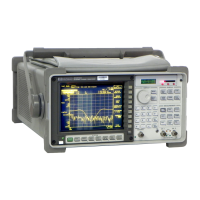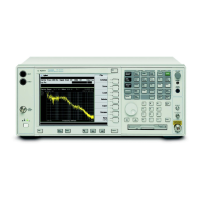Entering a Gain Factor
You can enter an optional parameter to set the gain of the synthesized
frequency response function. The default value for the gain factor is 1.0. The
gain factor appears at the bottom of the table.
Using a Gain Factor
The following example shows you how to use the gain factor to synthesize a 20
kHz low-pass filter (single pole).
H(jf) = 1 / (s + 20000)
The equation shows a pole (in pole-zero format) at -20 kHz. You would enter a
pole in pole-zero format at -20 kHz. It also yields a pass band gain (at 0 Hz) of
1/20000 (-86 dB). To obtain a gain of 0 dB, you would enter a gain factor of
20000. This changes the equation to:
H(jf)= 20000 / (s + 20000)
Nowthegainis1(0dB)at0Hz.
How To Keep the dc Gain Constant
To keep the dc gain constant for pole-zero or
polynomial transfer functions, adjust the gain by
a factor of (2π)
(n − m)
, where n is the order of
the numerator, and m is the order of the
denominator.
To keep the dc gain constant for pole-residue
transfer functions, you must adjust the gain for
each term in the partial-fraction-expansion. For
a simple pole, this means dividing the residue by
2π. For a complex-conjugate pole pair, this
means dividing the residue by (2π)
2
.
Agilent 35670A
Operator's Guide Synthesis Option 1D3
15-19

